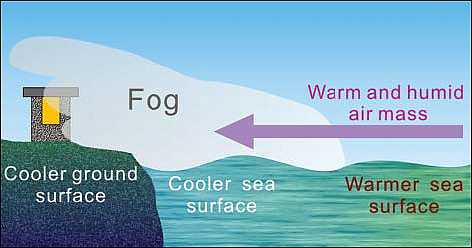The Looks of Water in Spring
We call the envelope of air surrounding the Earth the atmosphere. It is closely related to human and all kinds of living beings. Just as fish which cannot live without water, we all live in the bottom of the atmosphere and cannot leave it for a second. The atmosphere has various physical properties such as temperature, humidity, wind speed, air pressure and precipitation. Their variations can affect our lives and even existence. Through a series of articles, we will introduce the various elements or properties of the atmosphere in different seasons of the year. To begin our journey, let us start with the characteristics of water in springtime.
The atmosphere is in motion all the time so that heat and moisture around the world can be exchanged. Hong Kong's climate is subtropical with different features in each of the four seasons. In springtime, Hong Kong is occasionally affected by cold fronts followed by dry northerly winds. On the other hand, it is sometimes affected by warm and humid maritime airstream, causing very humid weather and even the occurrence of mist or fog. In Hong Kong, the most common type of fog in spring is advection fog. During this time, as the water along the coast of Guangdong is still rather cool, the warm and humid air coming from the distant ocean will be cooled by the underlying water. This results in condensation of water vapour into droplets and hence formation of fog (see the figure).

Fig.1 Schematic diagram showing formation of advection fog
You may recall that February this year was more humid than usual, with the refrigerators, washing machines or walls "sweating", i.e. water droplets forming on the surfaces. This phenomenon is called "Huinan" in Putonghua by the locals, which means backing to the south. From the perspective of meteorology and physics, this happens when cold air recedes and another warm and humid maritime airstream comes in rapidly. As the surface temperatures of walls, floors and outdoor glasses still remain low, water vapour in the warmer air can easily condense into tiny water droplets. The low water-absorbing capacity of these surfaces favours the aggregation of tiny droplets into water droplets, which are visible to us. However, as temperatures rise later on, moisture begins to vaporize and the weather phenomena of "Huinan" will disappear gradually.